The 2025 Rivian R1 Is the Hardest-Working Truck in Show Business
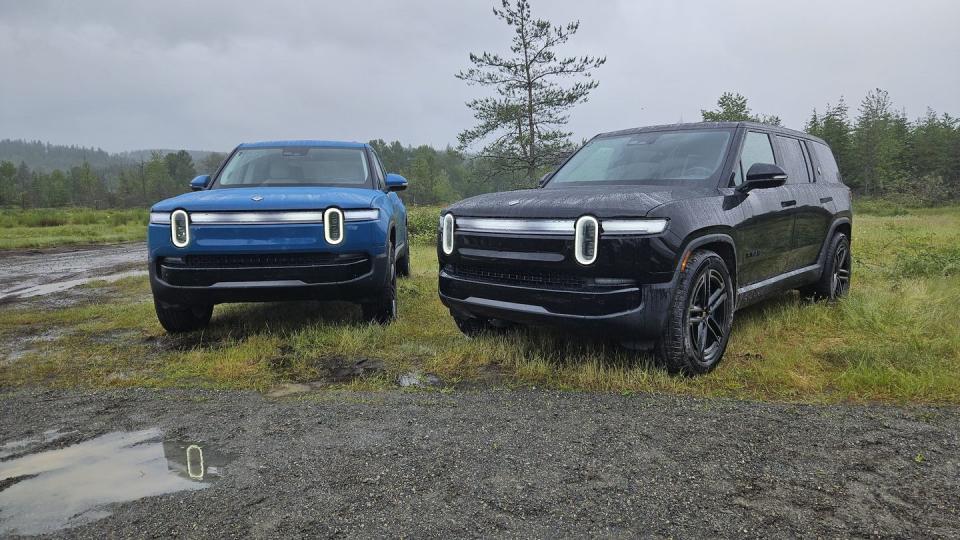
The lights on the tree flash from yellow to green, signaling the need to pick my foot up off the brake. I've been told the faster I can do so the better this process will be. There is a brief pause, a moment to consider the next quarter minute of life as the launch control system catches up. I'm gone in a blink, torn from the scene around me by 1200 lb-ft flowing through all four wheels. The traction control system is fighting to understand the VHT-stained surface, but the speed keeps piling on. I see 60 miles an hour in less than three seconds despite the wheelspin at launch. By the time I cross the final flags, I'm sitting at my 130-mph vMax. There was nothing inherently challenging about that pass, and yet it brought me my first taste of the high-10s. It also happened to come by way of a pickup truck.
Just a few short years after their official sales debut, the first-generation Rivian R1T and R1S models are no more. And despite what images of the new vehicle might look like, Rivian has been hard at work at dramatically revising the outgoing machine. With all-new motor designs, battery offerings, suspension hardware and tuning, and up to 1000-plus hp, the Rivian R1 lineup is getting a whole lot more exciting (and cheaper to build).
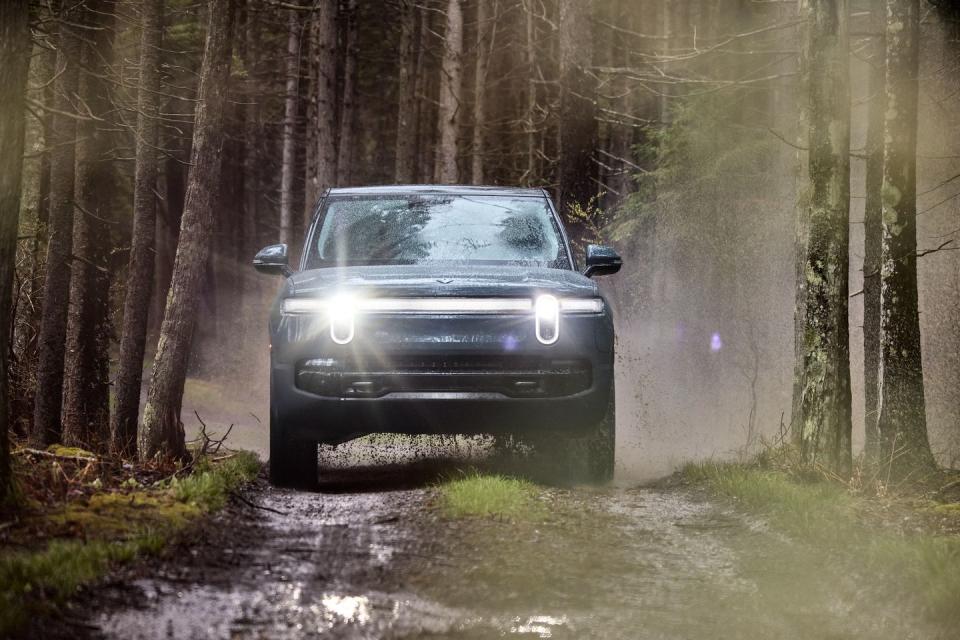
Powertrain
The second-generation Rivian R1 models will be offered in three different powertrain combinations: a Dual-Motor, a new Tri-Motor, and the range-topping Quad-Motor layout first introduced back in 2021. Only the entry-level dual-motor powertrain is a genuine carry-over. Rivian has developed two variants of a twin-motor drive unit slated for production in Normal, Illinois. Like the previous unit, the new motors utilize oil cooling for improved thermal management off-road or on the track. The new front-drive units are slightly downscaled from their rear-mounted counterparts, with less peak power and torque. This new layout helps ensure that the front motor is only ever receiving as much power as it can actually put to the ground, improving efficiency of the overall powertrain. The new rear-drive unit is more potent than the outgoing setup, complemented by some beefier internals to handle the torque increase.
Rivian says the entry-level Dual-Motor R1 models will provide customers with 533 hp and 610 lb-ft of torque, while the Performance Package brings that figure to 655 hp and 829 lb-ft. That package also allows for a 0-to-60-mph time of just 3.4 seconds, down from 4.5 seconds in non-performance trim. The new Tri-Motor models will bring 850 hp and 1103 lb-ft, up 15 hp and 195 lb-ft from the outgoing quad-motor. This jump will allow the Tri-Motor models to hit claimed 60-mph times of just 2.9 seconds, 0.4 second faster than the outgoing Quad. The new-range topper is in an entirely different league than its predecessor, thanks to those new twin-motor drive units at either axle. The second-generation R1 Quad-Motor models bring 1025 hp and 1198 lb-ft of torque, a gain of 190 hp and 290 lb-ft, respectively. That allows the 3.5-ton trucks to hit 60 mph from a stop in a claimed 2.5 seconds, before running the quarter-mile in 10.5 seconds. For reference, that's 0.2 second faster than the Chevrolet Corvette Z06 through either of those benchmarks. While unable to match those claimed figures during a brief stop at Pacific Raceways outside of Seattle, I did run a Quad-Motor R1T down the track in 10.89 seconds at 130 mph, with a 2.89-second 60-mph pass on the way. Impressive and utterly drama-free considering the chilly track surface. The claimed figures certainly don't seem out of the realm of possibility after an experience behind the wheel.
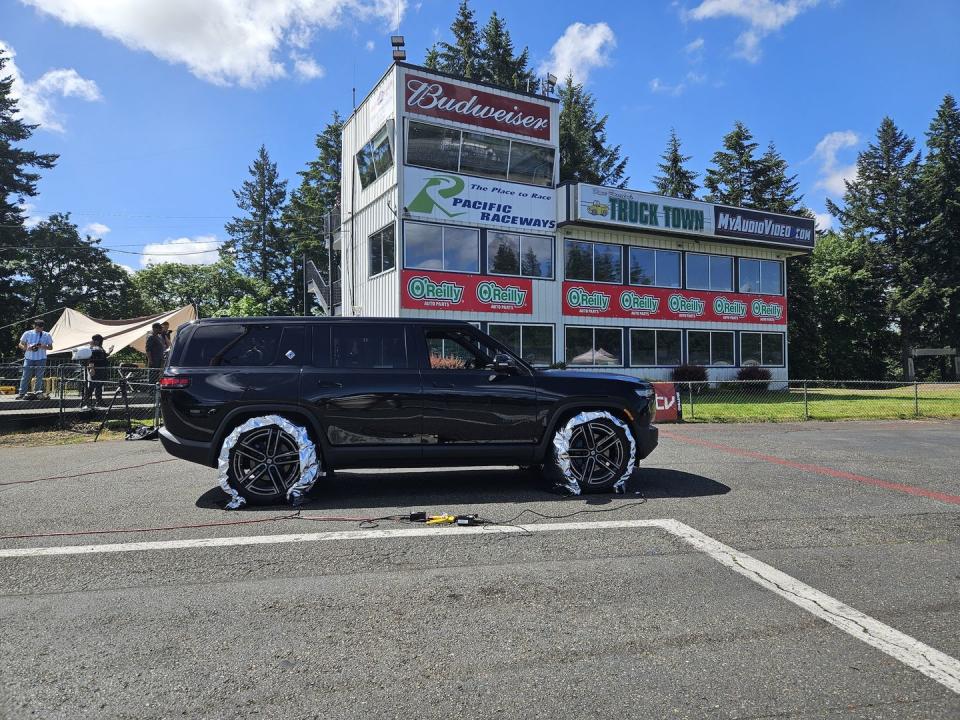
Battery & Range
Alongside the reworked drive units, Rivian has also invested in improving their battery options for the second-generation R1 lineup. The new Standard Pack features a lithium-iron-phosphate chemistry, complete with pouch cell construction. This entry-level pack isn't as energy dense as the 2170-cylindrical-cell offerings used in Rivian's pricier batteries (and in its existing older batteries) but will still provide an estimated range of around 270 miles per charge. This chemistry also holds up better in terms of degradation, important given that this lower-range pack will be charged more often. The casing of the battery pack has also been reworked across the lineup, with high-pressure die castings replacing the extruded elements found on the earlier packs. This not only helps reduce mass significantly (around 150 pounds in the off-road spec), but it also simplifies production in an effort to cut costs. The R1 lineup will also come bolstered by the Large and Max Battery pack options, which can provide an estimated range of up to 330 and 420 miles, respectively. That falls just short of the Silverado EV's EPA-certified range of 450 miles, but the Rivian is more efficient. The Rivian's largest battery pack comes in at 141 kWh, while the Silverado packs a gigantic 200-kWh Ultium unit. Rivian claims that the new R1T is the most efficient electric truck on the market, while the R1S provides more range than any other electric SUV. Both claims are tied to the dual-motor models with the performance package and the Max battery pack. Official EPA figures for the next-generation models are expected to arrive shortly.
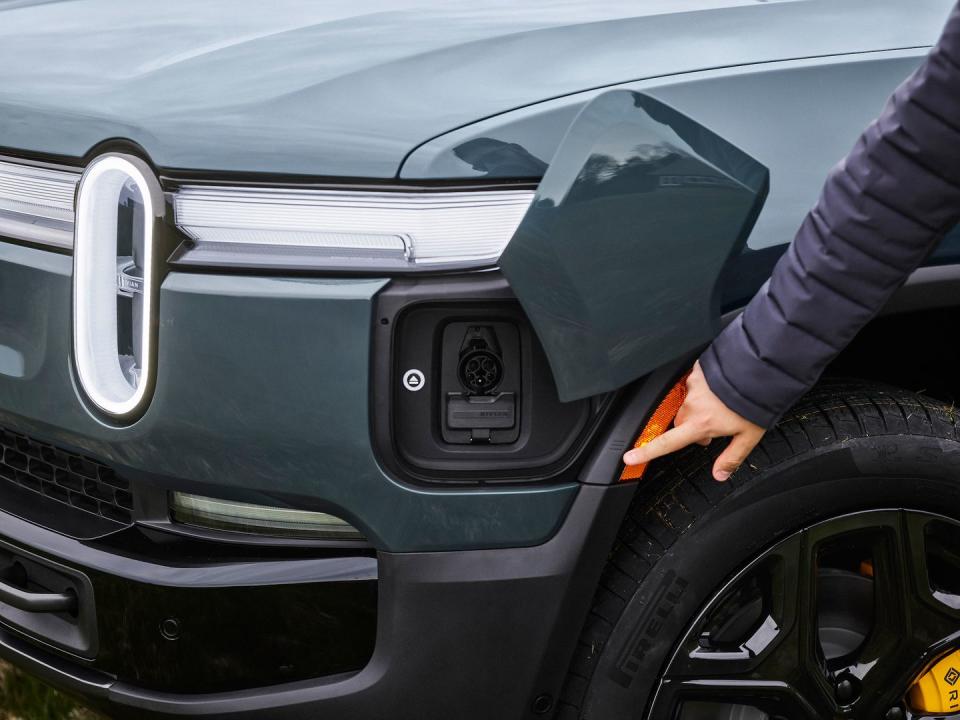
As before, the Rivian R1 lineup is supported by DC fast-charging via the usual non-Tesla CCS plug or through a NACS plug (that's the Tesla one) via an adapter. Rivian states that the second-generation trucks will be able to charge from 10 to 80 percent anywhere from 30 to 41 minutes depending on which battery you spec. With a fast-charger you'll also be able to add 140 miles of range in as little as 20 minutes. Customers can access all major public charging networks, including the automaker's own Rivian Adventure Network of dedicated Rivian-only chargers.
Suspension
Rivian's first-gen R1S customers were vocal about the fact that the SUV's ride was too stiff, particularly for second- and third-row passengers. The SUV loses out on 12 inches of wheelbase compared to the pickup, and its heavier rear end shifts the weight balance rearward. When combined with the sporty suspension found on first-gens, the R1S wasn't quite as confidence inspiring or as comfortable as the R1T. Rivian took that customer feedback to its dynamics team and completely revised the suspension package under the SUV. The independent air suspension setup now features new dampers and air springs, with a revised approach to springs rates at either axle. The air setup works in tandem with the company's electro-hydraulic anti-roll bars. (They were developed by a poached McLaren specialist.)
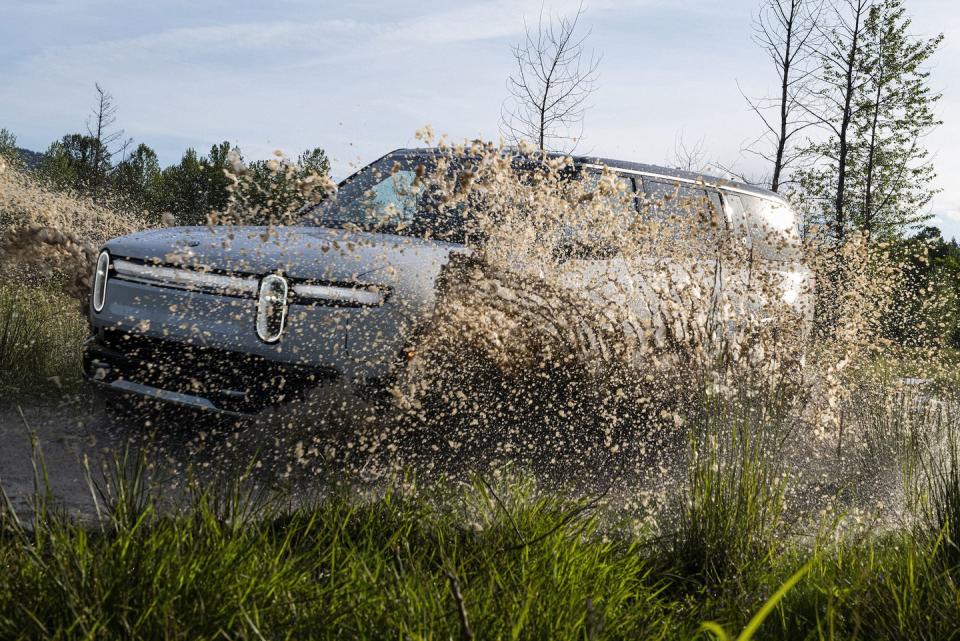
The result of all of that fiddling is immediately apparent. The R1S proved to be a genuinely comfortable partner down I-5 and in town with little harshness finding its way past the spring and damper combo. Some surface texture makes it through the seat bottom, but the SUV is more comfortable than a G-Wagen or GX550 on long highway runs. The truck remains slightly more compliant, receiving the same hardware adjustments as the R1S. The focus on improving liability hasn't taken away from the Rivian's performance both on and off-road, however. The seven-seater provides some serious wheeling capabilities, including approach, departure, and breakover angles of 35.8, 34.4, and 29.6 degrees, respectively. The R1T is not quite as capable on paper, with figures clocking in at 35.7, 29.9, and 26.4 degrees. The SUV also has a slightly higher max ground clearance figure of 14.7 inches.
The blend of capability and comfort off-road is quite impressive. The hydraulic setup works wonders at eliminating head toss, the most fatiguing aspect of the trail even in luxury 4x4s. Riding in the back seats wasn't particularly stomach churning either, which is a rarity among wheelers. The same was true when the pace picked up at DirtFish Rally School, a good place to test both Rally and Drift modes. Crank the suspension into one of the stiffer settings, and the truck is willing to take some serious angles through the loose-surface bends. There's no real body roll to speak of, again a result of that supercar-inspired hydraulic setup. If the outgoing SUV was a bit uninspired at the limit, the new model is anything but. The fact that you can then drive over to a drag strip and run a sub-11-second pass in this thing is hard to really comprehend. There isn't a suspension setup with a wider breadth of engineering objectives or capability on sale today.
Wheels and Tires
Rivian has a number of wheel and tire options available to tie that trick suspension system to the ground. The standard setup includes 20-inch wheels wrapped in Goodyear rubber, while an optional 22-inch aero wheel gets a set of range-focused Pirelli Scorpion tires developed with the help of Rivian's engineers. The snap-secured aero covers are actually removable, exposing what is a very handsome wheel design in its own right. The monoblock look of this particular package is excellent and will almost certainly prove popular. The quad-motor model gets an exclusive staggered set of 22-inch wheels wrapped in Michelin Pilot Sport 5 rubber, with gigantic 305-section rollers out back.
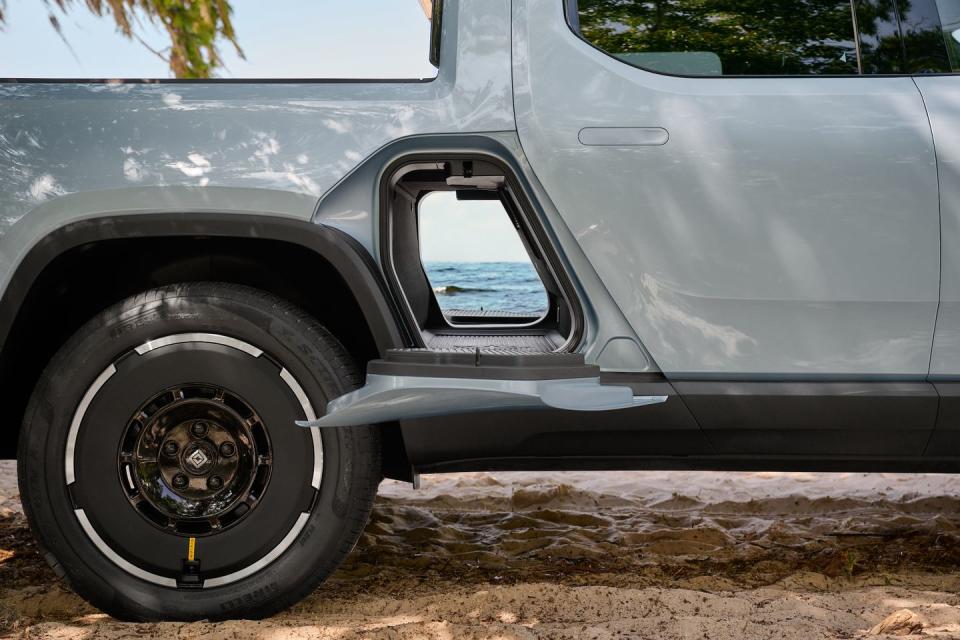
Interior
Another major area of focus for the Rivian team with this second-generation model comes by way of the interior. While the last generation managed a nice blend of sustainable materials and modern design, things have been elevated for round two. New Ascend-trimmed vehicles get vegan leather on nearly every hard-touch surface, including the door lowers, the center console, and even the airbag cover. New accent stitching throughout helps to make things feel a bit more premium, while plaid floor mats and accents capture the brand's "modern cabin" aesthetic. (There are even plaid straps for the map pocket pulls). Two new colorways also join the Ascend palette, which comes as standard equipment on Tri- and Quad-motor models. A new electrochromic glass roof panel helps to keep the cabin feeling airy. The sustainable material selection fits in well with the brand's ethos, but you're not really sacrificing much in return. Both R1 models feel every bit as nice as a Land Rover Discovery or Lexus GX from behind the wheel, but with a much more intuitive infotainment setup.

Rivian hasn't replaced the digital gauge cluster or central infotainment screen over the course of the update, but you'd be forgiven for thinking so. The automaker has teamed up with Epic Games for access to Unreal Engine, which the team has used to entirely rework the user interfaces of the Rivian R1 models. The gauges now feature a new font and different graphics, whereas each drive mode is now accompanied by a bespoke screen inspired by early cel animation. The changes are largely subtle, but they do look nicer than the outgoing screens when viewed side by side. So too do the various camera views, which now feature improved resolution due to eight times the number of megapixels shared across 11 cameras. The cameras can also see up to three times farther with improved color contrast as well. That upgrade was necessary for the all-new Rivian Autonomy Platform, which relies on a camera suite and a five-module radar suite for features like Lane Change on Demand and Enhanced Highway Assist due later this year.
Technology and Autonomy
Those advanced features are bolstered by the R1's new electronic architecture. Rivian's team was able to cut the number of individual ECUs in the platform from 17 to seven, removing 80 connectors from the assembly line in the process. That meant the team could lose 1.6 miles worth of wiring in their new wiring harness, eliminating 44 pounds to boot. And despite the drop in the number of ECUs, Rivian claims the next-generation R1s feature 10 times the computing power of the previous models. It will likely be the most powerful computer system you own. All of that processing power allows the brand to continue developing its AI- and machine-learning programs, which will help in expanding the ADAS suite.
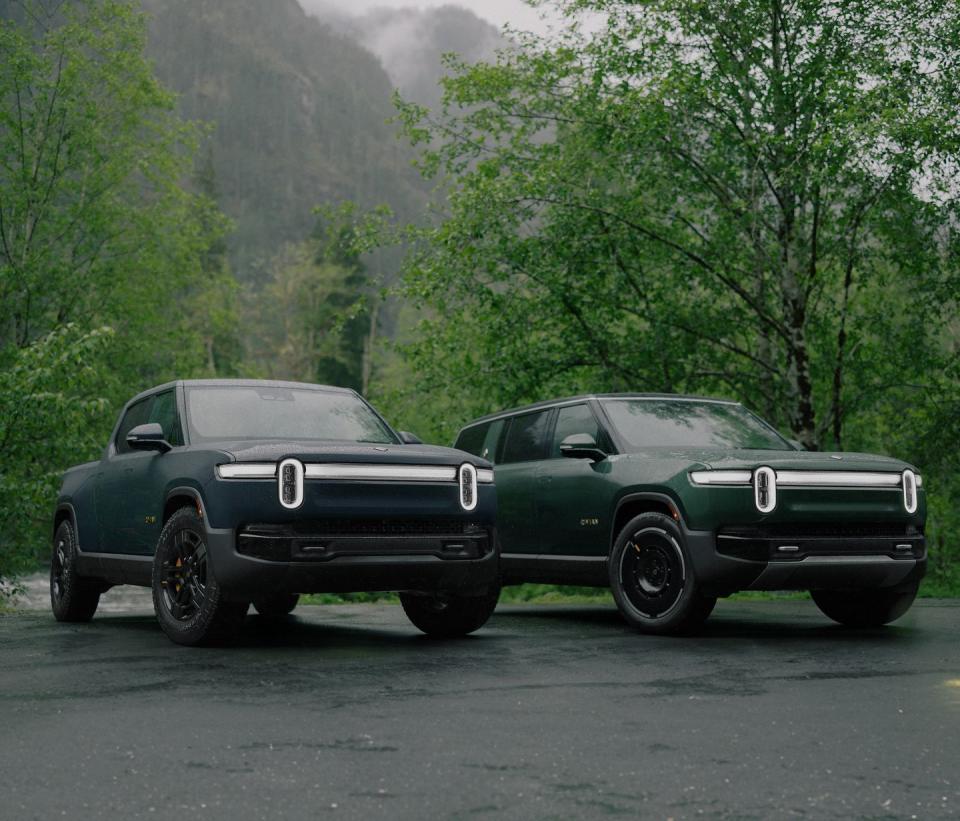
Pricing and Availability
Order books for the second-generation R1 models are now open. A Dual-Motor R1T with the Standard pack is slated to carry a starting price of $69,900, while the SUV starts at $75,900. An R1T with the Large pack starts at $76,900, while the equivalent R1S carries a price tag of $82,900. Max pack models start at $83,900 and $89,900, respectively. The Tri-Motor models won't go on sale until later this year and are notably more expensive than the entry models. The Tri-Motor R1T starts at $99,900, while the SUV is $105,900 to start. We don't have an exact timeline in place for the Quad-Motor variant at this time, nor do we know an estimate from Rivian as it relates to the base price. Don't be shocked to see availability for the range-topper take some time. Not that anyone actually needs anything beyond the new Tri-Motor (or dual for that matter) to begin with.
You Might Also Like

 Yahoo Autos
Yahoo Autos 